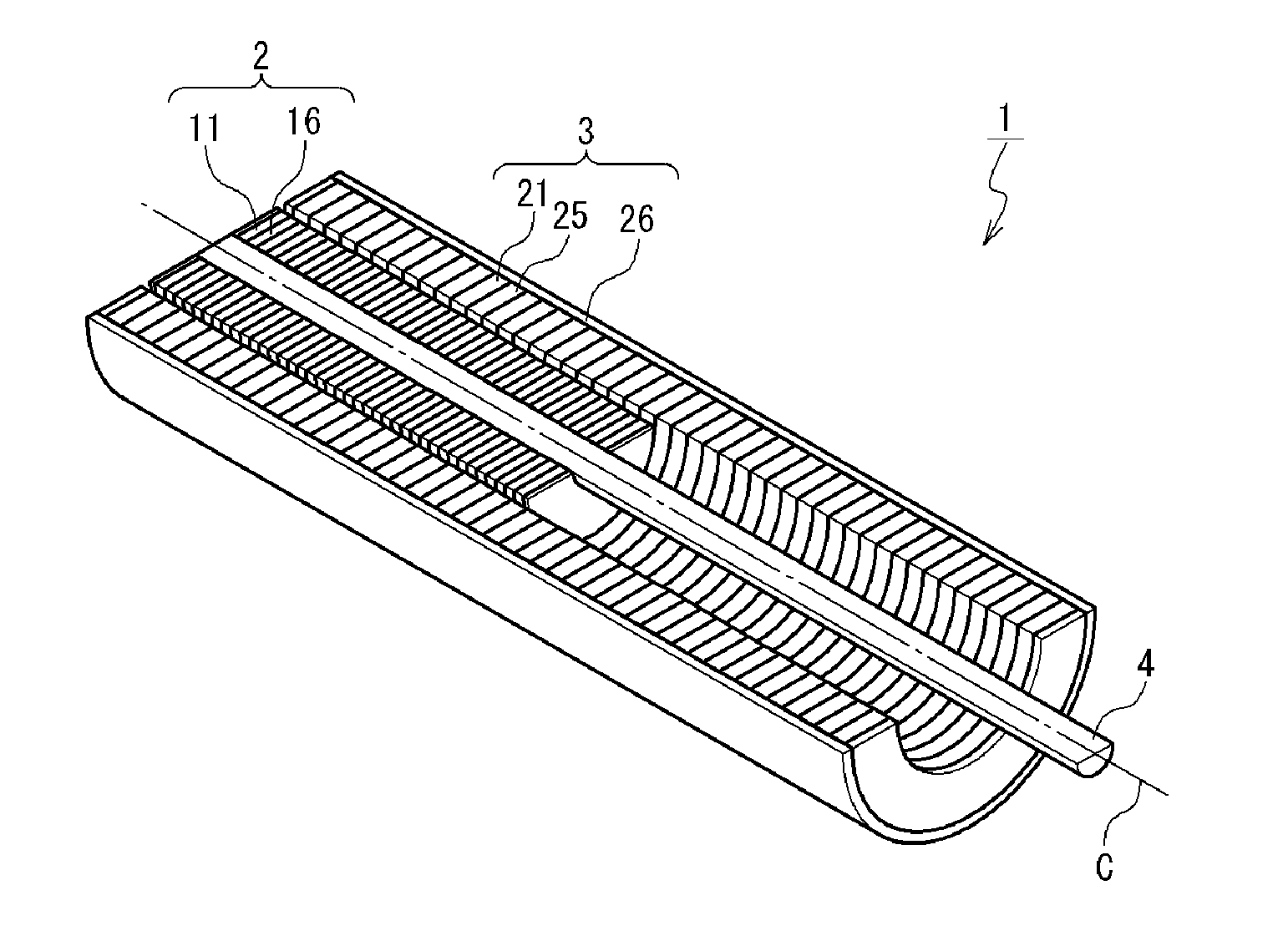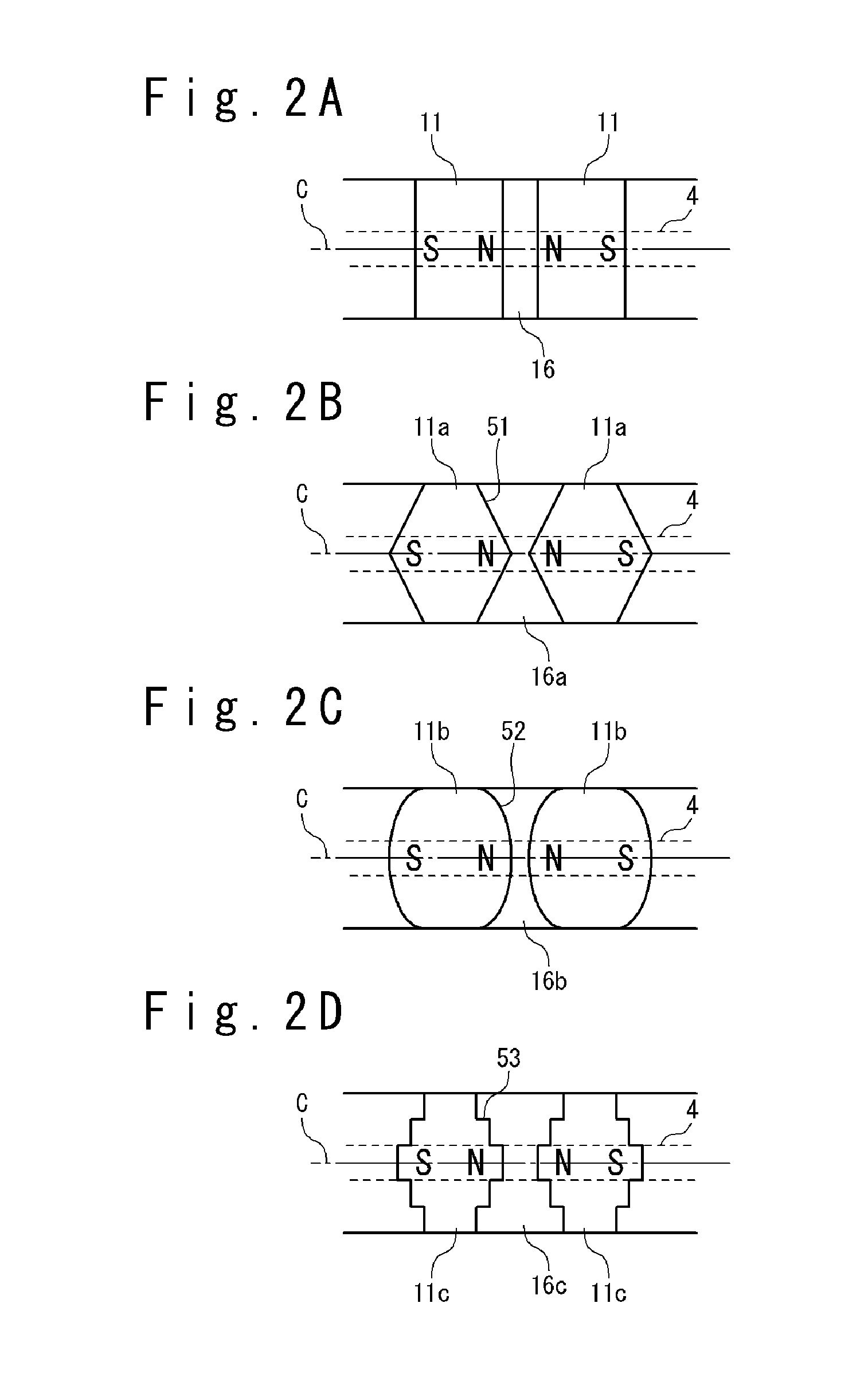Linear vernier motor
a vernier motor and linear technology, applied in the direction of dynamo-electric machines, electrical apparatus, propulsion systems, etc., can solve the problems of small difficult fixation of the permanent magnet to the mover, and detent force, so as to improve the driving force and reduce the detent force, the driving force to the own weight and volume of the motor can be made great, and the effect of improving the driving for
- Summary
- Abstract
- Description
- Claims
- Application Information
AI Technical Summary
Benefits of technology
Problems solved by technology
Method used
Image
Examples
first embodiment
[0056]First, the structure of the linear vernier motor according to a first embodiment of the present invention will be described. FIG. 1A is a schematic diagram showing a configuration example of the linear vernier motor according to the first embodiment of the present invention. FIG. 1B is a schematic diagram showing a relation between stators and movers in FIG. 1A. However, FIG. 1A shows only a half of the linear vernier motor 1 for easy understanding. Also, FIG. 1B shows a periodic structure of a stator 3 and a mover 2 to be described later.
[0057]The linear vernier motor 1 is a linear-type vernier motor and is composed of the stator 3, the mover 2 and a fixation shaft member 4. The stator 3 has the shape of a circular cylinder which has an axis C as a central axis, and includes the mover 2 therein. The mover 2 has the shape of a circular cylinder which has the axis C as the central axis. The mover 2 is movable on the fixation shaft member 4 which passes through the inside of the...
second embodiment
[0092]Next, a structure of the linear vernier motor according to the second embodiment of the present invention will be described. The present embodiment is different from the first embodiment in the point that, mainly, the length of the mover 2 is changed in order to reduce the cogging force. As previously described, since the linear vernier motor is not a rotary motor, the length of the mover can be freely changed and the flexibility of the design is high even at this point. In the present embodiment, the point different from the first embodiment will be mainly described.
[0093]The result of the consideration that the inventor carried out about the relation between the detent force and the number of the permanent magnets of the mover will be described. FIG. 7 is a schematic diagram showing the structure of the mover and position relation between the mover and the stator. The stator 3 is the same as the case (FIG. 1A and FIG. 1B) of the first embodiment. It is supposed that the refe...
PUM
 Login to View More
Login to View More Abstract
Description
Claims
Application Information
 Login to View More
Login to View More - R&D
- Intellectual Property
- Life Sciences
- Materials
- Tech Scout
- Unparalleled Data Quality
- Higher Quality Content
- 60% Fewer Hallucinations
Browse by: Latest US Patents, China's latest patents, Technical Efficacy Thesaurus, Application Domain, Technology Topic, Popular Technical Reports.
© 2025 PatSnap. All rights reserved.Legal|Privacy policy|Modern Slavery Act Transparency Statement|Sitemap|About US| Contact US: help@patsnap.com



